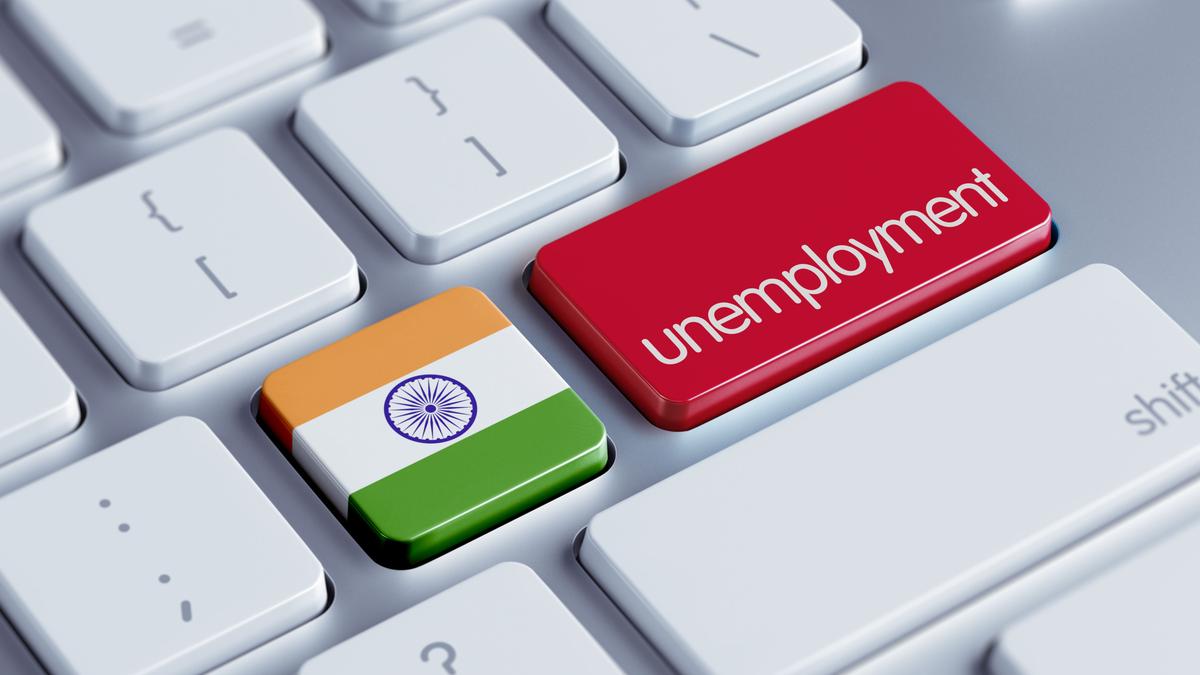The previous Budget, presented in July 2024 after the Lok Sabha election, had accorded priority to employment and skill development, given the nature of the election mandate. The Finance Minister had announced a Prime Minister’s Package of five schemes and initiatives to facilitate job and internship opportunities for 4.1 crore youth over a five-year period with a central outlay of ₹2 lakh crore. However, the Budget speech delivered in Parliament on February 1, 2025, did not refer to the Prime Minister’s Package even once. The document on implementation of Budget 2024-25 announcements states that a “draft Cabinet note on Employment Linked Incentive scheme is under finalisation” and “several meetings have been held with the Ministry of Labour and CII to discuss the relationship between capital expenditure and employment generation”. In other words, the future of the scheme looks bleak.
Deflationary budget
The September 2024 report of the Periodic Labour Force Survey (PLFS) revealed that in 2023-24, the youth unemployment rate (for those aged 15-29 years) had increased to 10.2% and the unemployment rate among graduates was 13%. Time series data from the PLFS show that the share of the workforce engaged in regular or salaried employment in the post-pandemic period has shrunk, while the share engaged in agriculture and informal self-employment has risen.
The latest Economic Survey also shows that average real earnings of self-employed male workers in India fell from ₹9,454 in 2017-18 to ₹8,591 in 2023-24. The monthly real wages of regular/salaried male workers also fell from an average of ₹12,665 in 2017-18 to ₹11,858 in 2023-24. Surplus labour inundating the job market, combined with high food inflation, have severely squeezed the real incomes and livelihoods of an overwhelming majority of India’s workforce. For a Finance Minister to overlook this is disingenuous.
The advanced estimates of GDP have already projected a decline of the real GDP growth rate to 6.4% in 2024-25 from 8.2% last year. In keeping with this, there is a slowdown in the Centre’s net tax revenues in 2024-25. With the Finance Minister keen on adhering to the fiscal consolidation path, the axe has fallen on government expenditure. Total expenditure is now likely to be over ₹1 lakh crore short of Budget Estimates (BE), with capital expenditure falling short of the target by over ₹92,000 crore.
Public expenditure on rural and urban development, agriculture, education, food subsidy, energy, transport, and health are all being axed. Among centrally sponsored schemes, the Revised Estimates (RE) for the Jal Jeevan Mission and Pradhan Mantri Awas Yojana (both rural and urban) show declines of ₹47,469 crore and ₹38,575 crore, respectively, from their BE. The expenditure on MGNREGA was cut in the BE itself by ₹3,654 crore from the previous year. Such deep cuts in budgeted capital and welfare expenditures would have a dampening effect on investment and consumption, especially in rural areas.
The Finance Minister has sought to counterbalance the deflationary impact of these expenditure cuts by enhancing the annual rebate for income tax payers from ₹7 lakh to ₹12 lakh from 2025-26. Data from the Income Tax Department show that only around 2.8 crore individuals had paid positive taxes in the assessment year 2023-24, out of the 7.54 crore filing income tax returns. The income tax relief for next year would therefore go to 2.8 crore individuals, who form only around 22% of India’s salaried workforce. For the rest who are faced with dwindling real incomes, there is nothing on offer.
The Finance Minister has estimated the revenue foregone on account of the income tax rebate to be ₹1 lakh crore. Instead, a cut of a similar magnitude in indirect taxes, such as the exorbitant excise duties on fuel or the central GST rates on mass consumption goods, could have provided relief to the entire class of working people. It is well known that the consumption propensity of wage earners is higher than that of the profit earners.
The average daily wage rate actually received by a MGNREGA worker (as per data provided by Ministry of Rural Development dashboard) has increased from ₹200.71 in 2019-20 to ₹252.31 in 2024-25. The national floor level minimum wage for unskilled workers in agriculture, in contrast, has been set at ₹452 in 2024-25. A well deserved, substantial hike in the MGNREGA wages in the Union Budget alongside an increase in rural development outlays would have led to increased consumption demand in the rural areas. The consumption effect of income tax breaks, in contrast, would be far more limited and concentrated in urban areas.
Running out of ideas
The latest Economic Survey cites a private sector research report to show how the after tax profit-to-GDP ratio of Nifty 500 companies surged from 2.1% in 2020-21 to 4.8% in 2023-24. While the deep corporate tax cut of September 2019 played a vital role in this profit surge, it has neither translated into higher levels of private corporate investment, nor employment generation.
Yet, the Union Budget has relied upon another tax break, this time for income tax payers, to inject demand into the economy, even while cutting capital and welfare expenditures to compress the fiscal deficit. This is unlikely to generate higher levels of economic growth and employment and raise the living standards of the vast majority of the working people. It is evident that the government has run out of ideas on the economic front.
Prasenjit Bose is an economist and activist
Published – February 03, 2025 01:55 am IST

